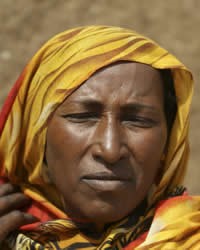What is the largest non-Arabic ethnic group between the Nile River and the Red Sea? The Bejas! One subgroup, the Hedareb, are nomadic shepherds who live in the desert regions of Sudan, Egypt and Eritrea. The Lord can raise up missionaries who are willing to go to the Beja and invest their lives to seeing Christ honored among these nomads. The Hedareb Beja can also encounter the gospel online and through radio. Many believe the Beja are descendants of Noah's grandson, Cush. They have occupied their current homeland for more than 4,000 years. During this time, they have adopted Islam and mixed it with folk religion.
They are scattered over more than 110,000 square miles. This makes it hard to reach all of them.
Ask God to reveal himself to the Beja and set them free from the belief that they can please God without the sin-free savior.
Pray for a movement to Christ among the Beja peoples.
There are no known Hedareb Beja believers. Pray for God to establish his church among this people group soon.
Pray for the Lord to thrust out determined ambassadors of Christ to these nomads.
Scripture Prayers for the Beja, Beni Amer in Eritrea.
| Profile Source: Joshua Project |

























